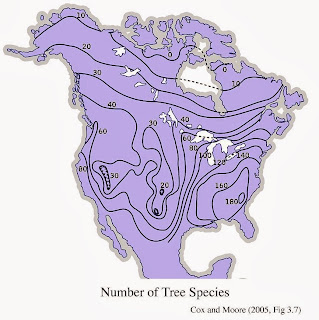 |
| MANGROVE "ISLAND" |
Found in versatile forms from low shrubby plants to majestic forest canopies reaching 30-40 m. Tomlinson, 1986 , mangroves and their habitats have generated so much interest from scientists and researchers that currently there are over 6000 scholarly references on the subject.
Inhabiting the upper inter-tidal zone of sheltered shores in the tropics, they are seldom found outside inter-tidal areas and mostly occur between mean sea level and the level of mean high water spring tides. Mangrove ecosystems are well established as they are sediment traps that maintain the quality of coastal waters, serving to protect coastlines from erosion during storms, habitats for rare fauna and nurseries for commercial fish and crustaceans. Ellison (1990)
Mangroves in the Ice Ages - On the front lines of Climate Fluctuations
However they show considerable resilience over timescales commensurate with shoreline evolution. This notion is supported by evidence that soil accretion rates in mangrove forests are currently keeping pace with mean sea-level rise. Further support for their resilience comes from patterns of recovery from natural disturbances (storms, hurricanes) which coupled with key life history traits, suggest pioneer-phase characteristics. Alongi (2008)
For example, Anak Krakatoa, a volcanic island off the Sunda shelf that first appeared in 1927 already has a colony of pioneer mangroves fringing its shoreline.
 |
| Mangroves growing in coastal regon of Anak Krakatoa. |
With a warming climate today, Mangroves are now marching north.....
 |
| Florida Everglade Mangrove Forest pushing further north as climate warms |
Mangroves are very sensitive to temperature and with the disappearance of winter freezing, mangroves are now displacing marsh grasses.
Scientists report it is not a small rise in average temperatures but the disappearance of cold winter nights that limited the growth of cold-sensitive species.
Given that the earth has only warmed by 1.5 degrees Fahrenheit since the 19th century, the pace and scale of some recent developments have been surprisingly fast Cavanaugh (2014)
Mangroves that fringe shorelines in the tropics are among the earth’s environmental treasures, yet in many places, mangroves are critically endangered by shoreline development and other human activities. Perhaps a change in climate that allows mangroves to thrive in new areas might well be seen as a happy development.
Unfortunately they are displacing salt marshes, which are also ecologically valuable and also under threat from development. Their ecology is markedly different from that of mangroves, raising new questions about what will be lost if marsh grasses are killed off by the invading trees.
Unfortunately they are displacing salt marshes, which are also ecologically valuable and also under threat from development. Their ecology is markedly different from that of mangroves, raising new questions about what will be lost if marsh grasses are killed off by the invading trees.
















_resized.jpg)


















